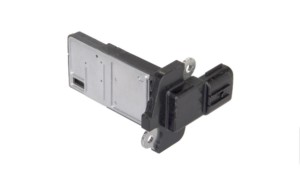A malfunctioning mass air flow (MAF) sensor can significantly impact your car’s performance and fuel efficiency. This guide provides a comprehensive overview of MAF sensor issues, focusing on AutoZone as a potential source for replacement parts. We’ll cover common symptoms, the replacement process, and frequently asked questions to help you understand and address MAF sensor problems.
What is a Mass Air Flow Sensor and How Does it Work?
The mass air flow sensor, crucial to your engine’s management system, measures the volume of air entering the engine. This information allows the Engine Control Module (ECM) to calculate the correct fuel amount for optimal combustion. A typical MAF sensor uses two wires: one heated and one for reference. As air flows over the heated wire, it cools down, changing the electrical current. The ECM analyzes this change to determine the airflow and adjust the fuel injection accordingly.
Bad Mass Air Flow Sensor Symptoms
A failing MAF sensor can manifest in various ways:
- Reduced Fuel Economy: Noticeably lower gas mileage can indicate a faulty MAF sensor.
- Rough Idling: A shaky or unstable idle, sometimes leading to stalling, can be a sign of incorrect air-fuel mixture due to a bad MAF sensor.
- Poor Acceleration: Hesitation or sluggishness when accelerating, especially when you quickly press the gas pedal, points towards a potential MAF sensor issue.
- Check Engine Light: An illuminated Check Engine Light, often accompanied by diagnostic trouble codes like P0101, strongly suggests a MAF sensor problem. Using an AutoZone code reader can help pinpoint the issue.
 alt
alt
Replacing a Mass Air Flow Sensor: Tools and Steps
Replacing a MAF sensor is often a manageable DIY task. Here’s what you’ll need:
- Socket Set
- Screwdrivers
- Torque Wrench
- Safety Glasses and Gloves
- New Mass Air Flow Sensor (available at AutoZone)
- Code Reader
Replacement Procedure:
- Disconnect the Battery: Always disconnect the negative battery terminal first to prevent electrical hazards.
- Locate the MAF Sensor: Usually found between the air filter housing and the throttle body. Consult your vehicle’s repair manual for the precise location.
- Disconnect Electrical Connector: Carefully detach the wiring harness from the MAF sensor.
- Remove the Sensor: Unscrew or unclamp the sensor from the air intake duct.
- Install the New Sensor: Securely position the new MAF sensor and fasten it.
- Reconnect Wiring and Battery: Reattach the wiring harness and reconnect the battery.
- Clear Diagnostic Codes: Use a code reader to clear any stored error codes related to the MAF sensor.
Mass Air Flow Sensor AutoZone: Finding the Right Part
AutoZone offers a wide selection of MAF sensors. Ensure compatibility with your vehicle’s year, make, and model when purchasing a replacement. Consider a Duralast MAF sensor from AutoZone for a reliable option.
Testing After Replacement
After installing the new MAF sensor, start the engine and monitor its performance. Check for the disappearance of previous symptoms and ensure the Check Engine light stays off. Some vehicles may require MAF sensor calibration after replacement.
Common Mistakes to Avoid
- Forgetting to Disconnect the Battery: This can lead to electrical damage.
- Using Incorrect Tools: This can damage the sensor or surrounding components.
- Ignoring Calibration Requirements: This can result in inaccurate readings and continued performance issues.
FAQs about Mass Air Flow Sensors
Q: How do I know if my MAF sensor is bad?
A: Look for symptoms like poor fuel economy, rough idling, weak acceleration, and a persistent Check Engine light.
Q: Can I clean a MAF sensor instead of replacing it?
A: Cleaning might temporarily help, but replacement is often the best long-term solution for a heavily soiled or damaged sensor.
Q: What happens if I drive with a bad MAF sensor?
A: It can lead to reduced fuel efficiency, poor engine performance, and potential damage to other components like the catalytic converter.
Q: Does a new MAF sensor need calibration?
A: It depends on the vehicle; some require calibration after installation. Consult your vehicle’s repair manual.
Q: Why might a new MAF sensor not work correctly?
A: Possible causes include a defective sensor, improper installation, or other underlying engine issues. If problems persist, consult a qualified mechanic. You can find quality parts and advice at your local AutoZone.
